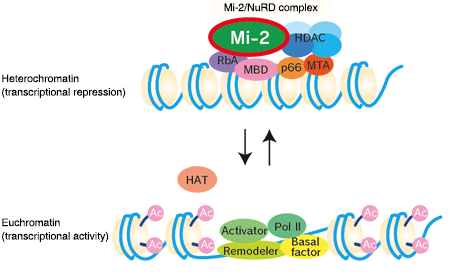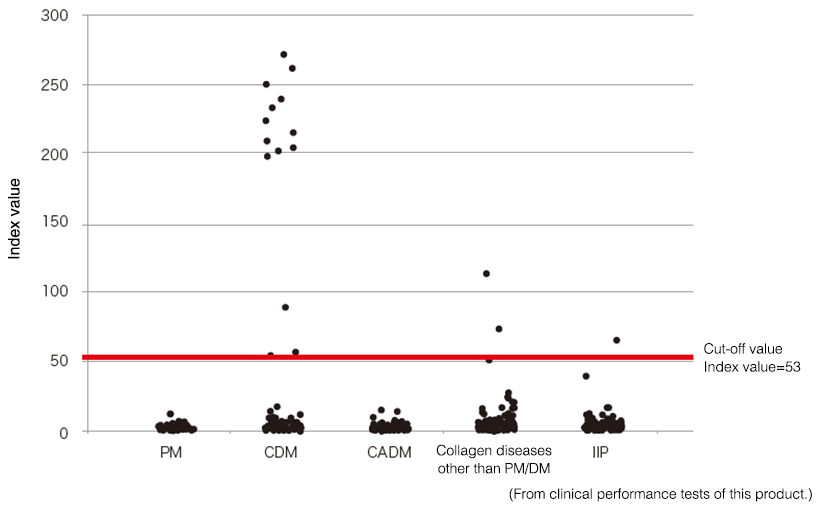Anti-Mi-2 ELISA Kit
Products may not be approved for sale as in vitro diagnostics in all countries.
Please contact us for further details.
Customers in the US, please contact MBL International Corporation for details.  ⇒
⇒
| Product | Code No. | Size | Method | RUO/IVD/ CE-IVD |
IFU | SDS |
|---|---|---|---|---|---|---|
| Anti-Mi-2 ELISA Kit | 7844R | 96 wells | ELISA |
![]() : Research Use Only Reagent
: Research Use Only Reagent
Characteristics of anti-Mi-2 antibody-positive dermatomyositis.
About 10% of patients with dermatomyositis are anti-Mi-2 antibody-positive. Its characteristics are as follows.
- High titers of antinuclear antibodies determined by fluorescent antibody assays.
- Frequently elevated creatinine kinase (CK) levels (5,000–10,000 IU/mL).
- Dermatomyositis-specific skin rash, especially the V- and shawl signs, is common.
- Rarely positive in clinically amyopathic dermatomyositis (CADM).
- Complications of interstitial pneumonia and malignant tumors are less frequent than in patients with other types of myositis-specific autoantibody positive dermatomyositis and the prognosis is relatively good.
Mi-2 protein
The Mi-2/NuRD complex forms inhibitory chromatin structures and is thought to contribute to transcriptional repression and heterochromatin formation by deacetylation, which removes acetyl groups from lysine residues on histones.

Anti-Mi-2 antibody distribution by disease

Anti-Mi-2 antibodies are positive in 14 (14%) of 100 patients with classic dermatomyositis (CDM). No specimens were positive for clinically amyopathic dermatomyositis (CADM). Two (1.1%) and one (0.6%) were positive for collagen diseases other than polymyositis/dermatomyositis (PM/DM) and idiopathic interstitial pneumonia (IIP).
*Upper limit of measurement range is an index of 150. Measured values > 150 should be taken as reference values.
Measurement principle: Enzyme-linked immunosorbent assay (ELISA)

The Mi-2 protein coated in microcups is reacted for 30 minutes with diluted patient samples. The cups are washed to remove unreacted antibody, then enzyme-labelled antibody is added and reacted for 30 minutes. The cups are washed again to remove unreacted enzyme-labelled antibody, then enzyme substrate is added and reacted for 15 minutes. The reaction is stopped, and the index value is calculated from the absorbance of simultaneously measured specimens and standards.
